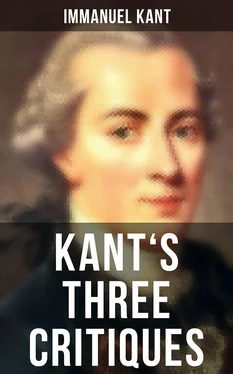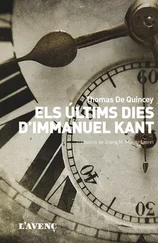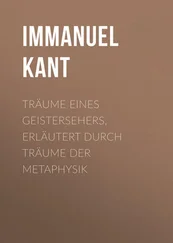Understanding accordingly limits sensibility, without at the same time enlarging its own field. While, moreover, it forbids sensibility to apply its forms and modes to things in themselves and restricts it to the sphere of phenomena, it cogitates an object in itself, only, however, as a transcendental object, which is the cause of a phenomenon (consequently not itself a phenomenon), and which cannot be thought either as a quantity or as reality, or as substance (because these conceptions always require sensuous forms in which to determine an object)— an object, therefore, of which we are quite unable to say whether it can be met with in ourselves or out of us, whether it would be annihilated together with sensibility, or, if this were taken away, would continue to exist. If we wish to call this object a noumenon, because the representation of it is non-sensuous, we are at liberty to do so. But as we can apply to it none of the conceptions of our understanding, the representation is for us quite void, and is available only for the indication of the limits of our sensuous intuition, thereby leaving at the same time an empty space, which we are competent to fill by the aid neither of possible experience, nor of the pure understanding.
The critique of the pure understanding, accordingly, does not permit us to create for ourselves a new field of objects beyond those which are presented to us as phenomena, and to stray into intelligible worlds; nay, it does not even allow us to endeavour to form so much as a conception of them. The specious error which leads to this — and which is a perfectly excusable one — lies in the fact that the employment of the understanding, contrary to its proper purpose and destination, is made transcendental, and objects, that is, possible intuitions, are made to regulate themselves according to conceptions, instead of the conceptions arranging themselves according to the intuitions, on which alone their own objective validity rests. Now the reason of this again is that apperception, and with it thought, antecedes all possible determinate arrangement of representations. Accordingly we think something in general and determine it on the one hand sensuously, but, on the other, distinguish the general and in abstracto represented object from this particular mode of intuiting it. In this case there remains a mode of determining the object by mere thought, which is really but a logical form without content, which, however, seems to us to be a mode of the existence of the object in itself (noumenon), without regard to intuition which is limited to our senses.
Before ending this transcendental analytic, we must make an addition, which, although in itself of no particular importance, seems to be necessary to the completeness of the system. The highest conception, with which a transcendental philosophy commonly begins, is the division into possible and impossible. But as all division presupposes a divided conception, a still higher one must exist, and this is the conception of an object in general — problematically understood and without its being decided whether it is something or nothing. As the categories are the only conceptions which apply to objects in general, the distinguishing of an object, whether it is something or nothing, must proceed according to the order and direction of the categories.
1. To the categories of quantity, that is, the conceptions of all, many, and one, the conception which annihilates all, that is, the conception of none, is opposed. And thus the object of a conception, to which no intuition can be found to correspond, is = nothing. That is, it is a conception without an object (ens rationis), like noumena, which cannot be considered possible in the sphere of reality, though they must not therefore be held to be impossible — or like certain new fundamental forces in matter, the existence of which is cogitable without contradiction, though, as examples from experience are not forthcoming, they must not be regarded as possible.
2. Reality is something; negation is nothing, that is, a conception of the absence of an object, as cold, a shadow (nihil privativum).
3. The mere form of intuition, without substance, is in itself no object, but the merely formal condition of an object (as phenomenon), as pure space and pure time. These are certainly something, as forms of intuition, but are not themselves objects which are intuited (ens imaginarium).
4. The object of a conception which is self-contradictory, is nothing, because the conception is nothing — is impossible, as a figure composed of two straight lines (nihil negativum).
The table of this division of the conception of nothing (the corresponding division of the conception of something does not require special description) must therefore be arranged as follows:
| NOTHING AS |
| 1 As Empty Conception without object, ens rationis |
| 2 Empty object of a conception, nihil privativum |
3 Empty intuition without object, ens imaginarium |
| 4 Empty object without conception, nihil negativum |
We see that the ens rationis is distinguished from the nihil negativum or pure nothing by the consideration that the former must not be reckoned among possibilities, because it is a mere fiction — though not self-contradictory, while the latter is completely opposed to all possibility, inasmuch as the conception annihilates itself. Both, however, are empty conceptions. On the other hand, the nihil privativum and ens imaginarium are empty data for conceptions. If light be not given to the senses, we cannot represent to ourselves darkness, and if extended objects are not perceived, we cannot represent space. Neither the negation, nor the mere form of intuition can, without something real, be an object.
38 If any one wishes here to have recourse to the usual subterfuge, and to say, that at least realitates noumena cannot be in opposition to each other, it will be requisite for him to adduce an example of this pure and non-sensuous reality, that it may be understood whether the notion represents something or nothing. But an example cannot be found except in experience, which never presents to us anything more than phenomena; and thus the proposition means nothing more than that the conception which contains only affirmatives does not contain anything negative — a proposition nobody ever doubted.
Transcendental Logic.
Second Division.
Transcendental Dialectic.
Table of Contents
Introduction.
I. Of Transcendental Illusory Appearance.
Table of Contents
We termed dialectic in general a logic of appearance. This does not signify a doctrine of probability; for probability is truth, only cognized upon insufficient grounds, and though the information it gives us is imperfect, it is not therefore deceitful. Hence it must not be separated from the analytical part of logic. Still less must phenomenon and appearance be held to be identical. For truth or illusory appearance does not reside in the object, in so far as it is intuited, but in the judgement upon the object, in so far as it is thought. It is, therefore, quite correct to say that the senses do not err, not because they always judge correctly, but because they do not judge at all. Hence truth and error, consequently also, illusory appearance as the cause of error, are only to be found in a judgement, that is, in the relation of an object to our understanding. In a cognition which completely harmonizes with the laws of the understanding, no error can exist. In a representation of the senses — as not containing any judgement — there is also no error. But no power of nature can of itself deviate from its own laws. Hence neither the understanding per se (without the influence of another cause), nor the senses per se, would fall into error; the former could not, because, if it acts only according to its own laws, the effect (the judgement) must necessarily accord with these laws. But in accordance with the laws of the understanding consists the formal element in all truth. In the senses there is no judgement — neither a true nor a false one. But, as we have no source of cognition besides these two, it follows that error is caused solely by the unobserved influence of the sensibility upon the understanding. And thus it happens that the subjective grounds of a judgement and are confounded with the objective, and cause them to deviate from their proper determination, 39 just as a body in motion would always of itself proceed in a straight line, but if another impetus gives to it a different direction, it will then start off into a curvilinear line of motion. To distinguish the peculiar action of the understanding from the power which mingles with it, it is necessary to consider an erroneous judgement as the diagonal between two forces, that determine the judgement in two different directions, which, as it were, form an angle, and to resolve this composite operation into the simple ones of the understanding and the sensibility. In pure a priori judgements this must be done by means of transcendental reflection, whereby, as has been already shown, each representation has its place appointed in the corresponding faculty of cognition, and consequently the influence of the one faculty upon the other is made apparent.
Читать дальше












